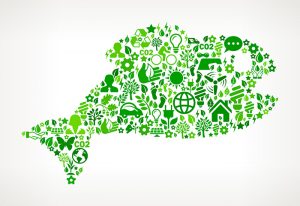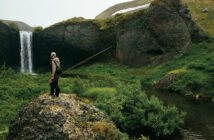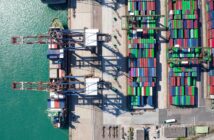 By Rick Crawford
By Rick Crawford
We can all agree that we want clean air, clean water and thriving fisheries, right? For almost a decade now I have worked with communities, businesses and non-profits to ensure they are working toward a sustainable future. What does a “sustainable future” look like? The 1987 Brundtland Commission defined sustainable development as, “Meeting the needs of the present without compromising the needs of future generations to meet their own needs.” A sustainable future is one where natural resources, such as plants and animals, are protected and preserved from being exploited, which, not coincidentally, is the definition of conservation. In order to ensure that future generations are able to fish for wild trout, bonefish and all the other species we love to fish for, then conserving natural resources and climate change must be addressed.
Climate change is happening as we speak, and is caused from the burning of fossil fuels. Fossil fuels emit greenhouse gasses which warm our planet, and a warming planet negatively impacts aquatic species. Below are some of the ways climate change is currently impacting fisheries:
- There is less snowpack, meaning less cold water feeding streams & rivers that trout depend on for survival, and warmer river temperatures put stress on trout making it more difficult for them to survive.
- Ocean acidification is making it difficult for shelled animals (oysters, mussels, etc.) & crustaceans (shrimps, crabs, etc.) to build their shells and survive, which impacts entire ecosystems.
Need proof? Consider the stream closures in Wyoming and Montana that occurred in 2016 as a result of warm water temperatures, or the study recently conducted by the University of Georgia that found that over the last thirty years the salt marsh near Sapelo Island has declined by 35%. Climate change negatively impacts fisheries, which will have major implications for the fly-fishing industry.
There are currently around 7 billion people on the planet and it is estimated that by 2050, there will be over 9 billion people living on a planet with finite resources. This is a significant increase in the demand of natural resources to meet basic human needs such as food, clothing and shelter. If these basic needs are met by farming, manufacturing and construction practices that burn fossil fuels, then we will have created an unsustainable future.
The next logical question is, “how do we achieve a sustainable future?” Below are a couple of steps you can take to get your business working towards a sustainable future:
- Measure the energy, waste and water usage of your organization so that you have a baseline to measure progress towards minimizing the amount of resources your company demands.
- Calculate your company’s Greenhouse Gas emissions.
- Develop strategies for minimizing your company’s environmental footprint, such as installing solar panels, composting and installing low-flow faucets and toilets.
I believe the fly fishing industry can become the world’s first truly sustainable industry, but more than my belief, it must, because its very existence depends on it.
Rick Crawford is a mediocre fly fisherman and the President of Emerger Strategies, a company providing fly fishing lifestyle brands, manufacturers and retailers with sustainability and marketing strategies that mitigate risks, enhance brand value and increase profitability. After graduating with an MBA in Sustainable Business from Marylhurst University, Crawford spent the last five years in the sustainability industry working with start-ups, small-to-medium enterprises and manufacturers in a variety of fields, including: solar, bio-diesel, green building and product transparency. Click here for more information.
Editor’s note: See the next issue of TROUT magazine, the national publication of Trout Unlimited, and the widest read magazine in fly fishing… the theme of that entire issue is climate change.



